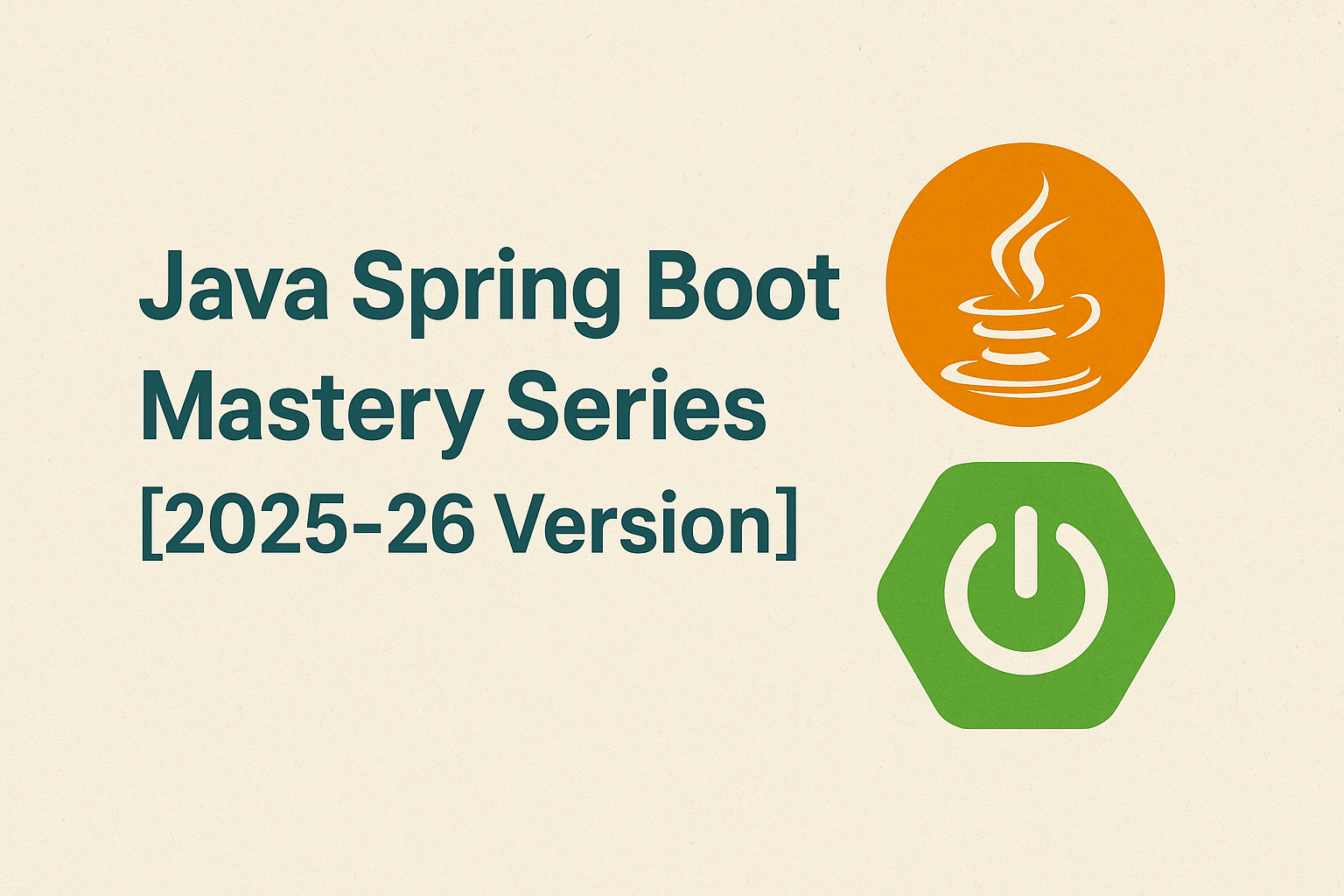In a microservices architecture, managing configurations across multiple services becomes difficult. Spring Cloud Config provides centralized configuration management, ensuring consistency and dynamic updates without redeploying services.
🎯 Why Centralized Configuration?
✅ Central place to manage configuration for all services
✅ Environment-specific settings (dev, qa, prod)
✅ Dynamic refresh of properties
✅ Secure secrets handling
🧰 Components
| Component | Role |
|---|---|
| Config Server | Central service that provides configurations |
| Config Client | Your microservices that fetch configs from server |
| Git/Native backend | Source of config (Git repo, filesystem, etc.) |
⚙️ Step-by-Step Setup
🛠️ Step 1: Create the Spring Cloud Config Server
🔸 pom.xml
<dependency>
<groupId>org.springframework.cloud</groupId>
<artifactId>spring-cloud-config-server</artifactId>
</dependency>
🔸 @EnableConfigServer
@SpringBootApplication
@EnableConfigServer
public class ConfigServerApp {
public static void main(String[] args) {
SpringApplication.run(ConfigServerApp.class, args);
}
}
🔸 application.yml
server:
port: 8888
spring:
cloud:
config:
server:
git:
uri: https://github.com/your-org/config-repo
clone-on-start: true
📂 In the Git repo, add files like:
application.ymlservice-a.ymlservice-b-dev.ymlservice-c-prod.yml
🛠️ Step 2: Set Up a Config Client (e.g., Service A)
🔸 pom.xml
<dependency>
<groupId>org.springframework.cloud</groupId>
<artifactId>spring-cloud-starter-config</artifactId>
</dependency>
🔸 bootstrap.yml (or application.yml in latest Spring Boot)
spring:
application:
name: service-a
cloud:
config:
uri: http://localhost:8888
💡 spring.application.name must match the file in your Git config repo (service-a.yml)
🧪 Test the Setup
Start:
- Config Server (port
8888) - Service A (port
8080)
Visit:
http://localhost:8888/service-a/default
→ You’ll see the properties from your Git repo.
🔄 Dynamic Property Refresh
Use @RefreshScope on a Spring-managed bean:
@RestController
@RefreshScope
public class GreetingController {
@Value("${greeting.message}")
private String message;
@GetMapping("/greet")
public String greet() {
return message;
}
}
🔁 Trigger Refresh (Actuator Required)
Add Actuator Dependency:
<dependency>
<groupId>org.springframework.boot</groupId>
<artifactId>spring-boot-starter-actuator</artifactId>
</dependency>
Enable refresh endpoint in application.yml:
management:
endpoints:
web:
exposure:
include: refresh
Trigger refresh:
cu rl -X POST http://localhost:8080 /actuator/refresh🧱 Git Repo Structure Example
config-repo/
├── application.yml
├── service-a.yml
├── service-b-dev.yml
└── service-c-prod.yml
Spring uses
{application-name}-{profile}.ymlnaming convention.
🔐 Securing Config Server
Add credentials to access Git:
spring:
cloud:
config:
server:
git:
username: your-username
password: your-token
Or use environment variables for secrets.
🔧 Native File-Based Config (Alternative to Git)
spring:
cloud:
config:
server:
native:
search-locations: file:///path/to/configs
Use --spring.profiles.active=native when running the config server.
🌍 Real-World Use Case
- Use Git repo for versioned config.
- Services like service-a, service-b, and gateway fetch their configs.
- You can change any property and just call the
/actuator/refreshendpoint — no need to restart the service.
✅ Summary
| Feature | Benefit |
|---|---|
| Centralized Config | Manage all configs in one place |
| Environment Support | Easy separation of dev, prod, etc. |
| Dynamic Refresh | Update properties without restart |
| Git Integration | Version control for configs |
➡️ Next Up: Part 20 – Spring Cloud Gateway for API Routing & Filters


![Real-Time WebSockets and Messaging in Spring Boot [Java Spring Boot Mastery Series – Part 16]](https://seoinfotech.com/wp-content/uploads/2025/06/jav-spring-boot-mastery--300x200.png)


